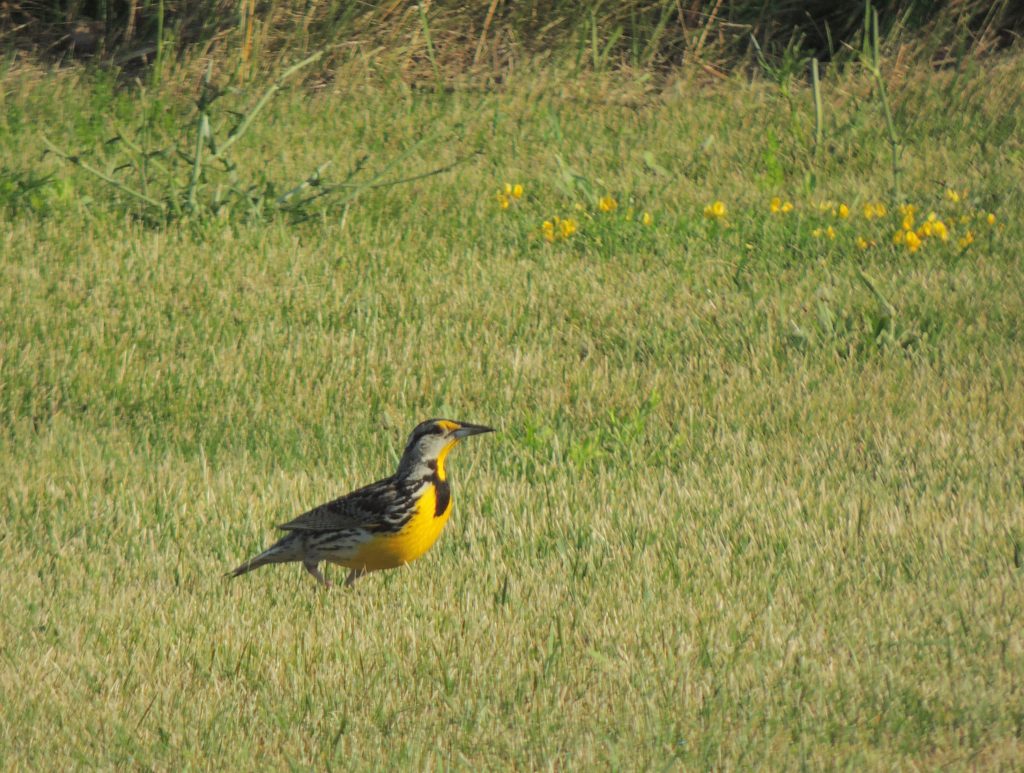
Bayview Park, Burlington ON. June 29 .2021. One of my Breeding Bird Atlas challenges is to complete a 5-minute point-count in an expanse of grassland.(Point-count: A tally of all birds seen and heard in a short period of time.) We don’t have much grassland here, not in the sense of wide-open and un-mown as might have existed before European settlement. What we do have is urban sprawl lapping up against a mix of deciduous woodlands and cash-crop farmland.
Luckily, many years ago, the city created a large park which now accommodates a leash-free dog park, a model airplane clubhouse with airstrip and little else except lots of deep un-mowed grass; certain grassland birds like it.
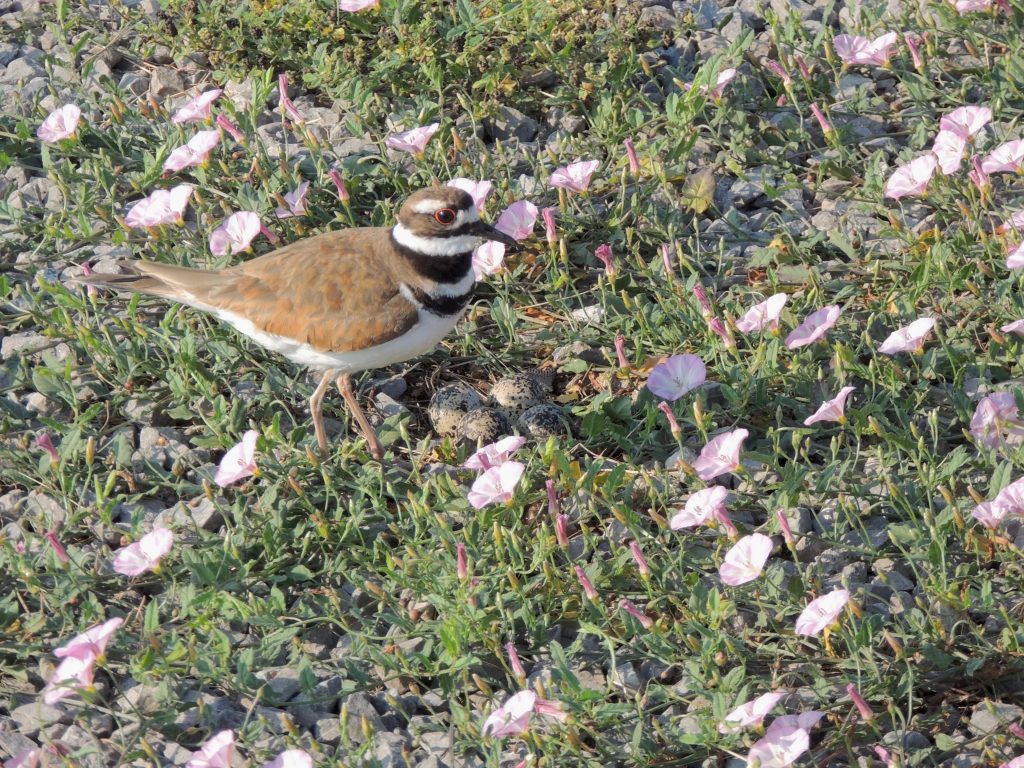
In the past two or three weeks I have spent many early morning hours here. It’s quieter then, certainly better before anxious dogs or model airplanes start to unsettle things and I like to think I have the birds to myself. Sitting alone and watching, I’ve got the measure of a Brown Thrasher’s territory and located the nests of Orchard Orioles, Baltimore Orioles, Barn Swallows and Killdeers.
I have also observed and counted a few strictly grassland birds. Savannah Sparrows are everywhere and readily pop up out of the grass to show their anxiety. I confirmed them as a breeding species after watching one carry a beak-full of insects to its nestlings.
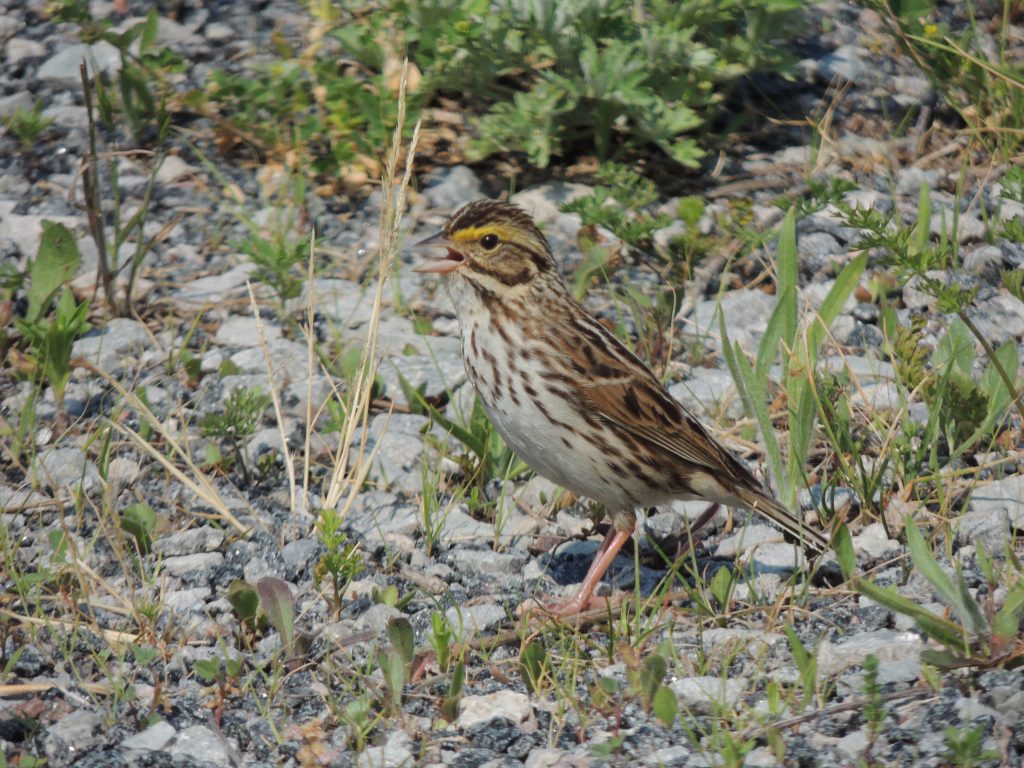
Bobolinks and Eastern Meadowlarks, unlike the sparrows, are much more secretive. I hear them frequently but they take flight quickly and disappear into the grass long before anyone gets close. I’m certain they have partners and nests in there somewhere.
Something was different today, perhaps I was less conspicuous sitting in the shade; whatever the reason, an Eastern Meadowlark was my lucky-find Bird of the Day. It landed not twenty metres from me and spent a few minutes walking stiffly on the short-mown grass of the model airplane landing zone, picking for food and stopping every few paces to sing its melodic ‘spring-of-the-year’ song, a way of asserting his territorial rights. I was able to busy my camera and managed a few shots.
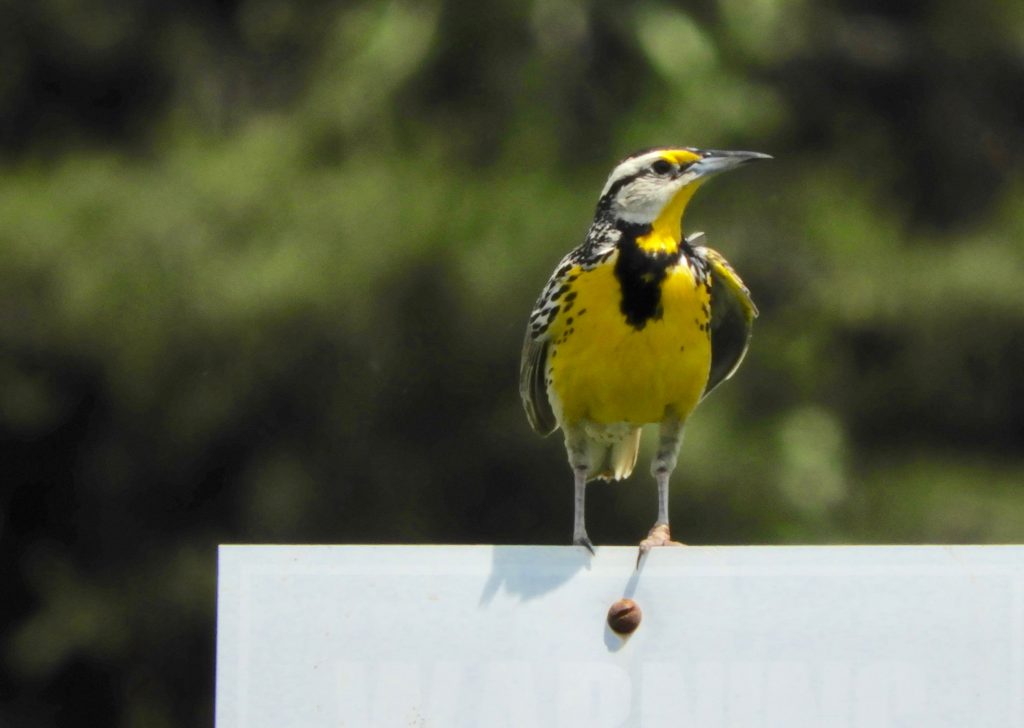
The deep yellow of its throat and breast and the dagger beak make a striking looking bird.
I view these meadowlarks and Bobolinks as incomplete stories: I wait and hope to see confirmation of breeding. It won’t be by finding their nests, it would be destructive and unethical to try, but one of these days I’ll glimpse them carrying food to their young or perhaps see those youngsters developing their first flight skills.
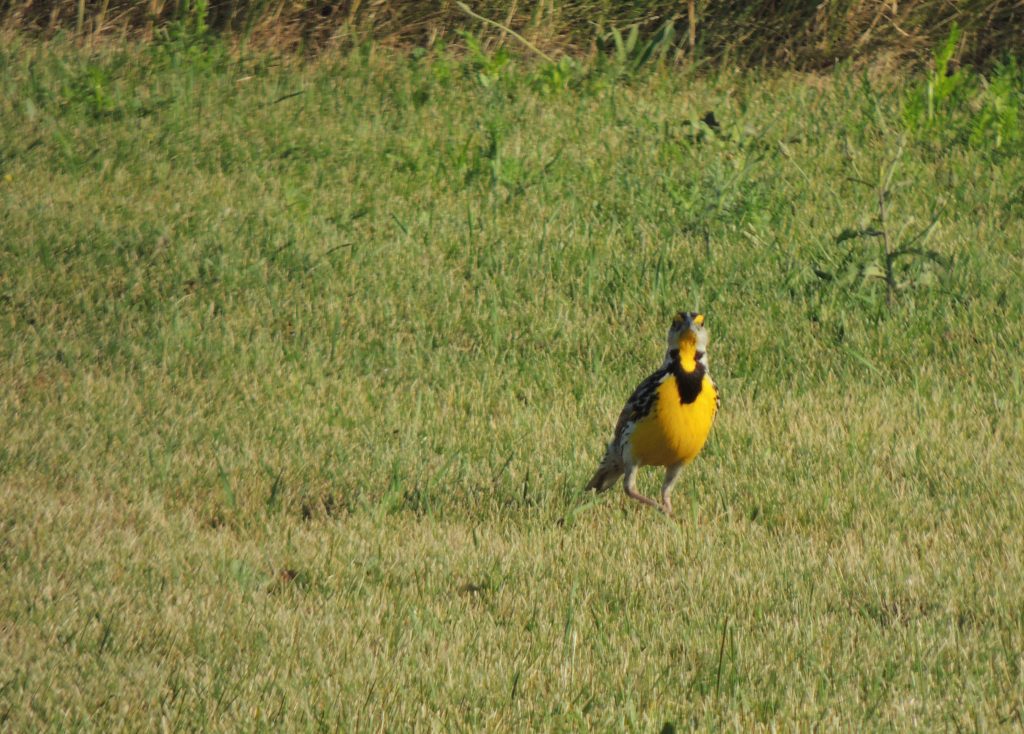
What an excellent assortment of birds- good job on your sleuthing!
Wow…I have been by that park walking up King Rd many times early morning and never realized what treasures are hidden there if you take the time to wander off the road and sit quietly to observe….very interesting posts you have Peter I am enjoying your bird of the day series.


I looked for a bobolink nest in a hay field that was about to be mowed down, as many of them are before the end of June now. The new hay varieties mature earlier than the old kinds — it is supposed to be an ‘improvement’ which saves the farmer some money. Unfortunately, that savings comes at a steep cost for grasslands species like the Bobolink, Meadowlark and also the Monarch butterfly. Early hay mowing is by far, the main cause of the Bobolink’s decline today. Anyway, I could not find one nest in that hay field — they are concealed very well! So, I too will wait in hopes of seeing fledged young soon. Good luck finding them!
Thanks, Peter.
Wonderful photos of the handsome Eastern Meadowlark.
We have been enjoying their bright songs while visiting Bronte Creek Provincial Park (day use area) that has large swaths of unmowed prairie- type grasses. Sadly, I’ve been unable to see one, they stay well away from pathways.
But we have spotted several Bobolinks; another excellent vocalist. Obviously happy to find just the right grass height for their needs.